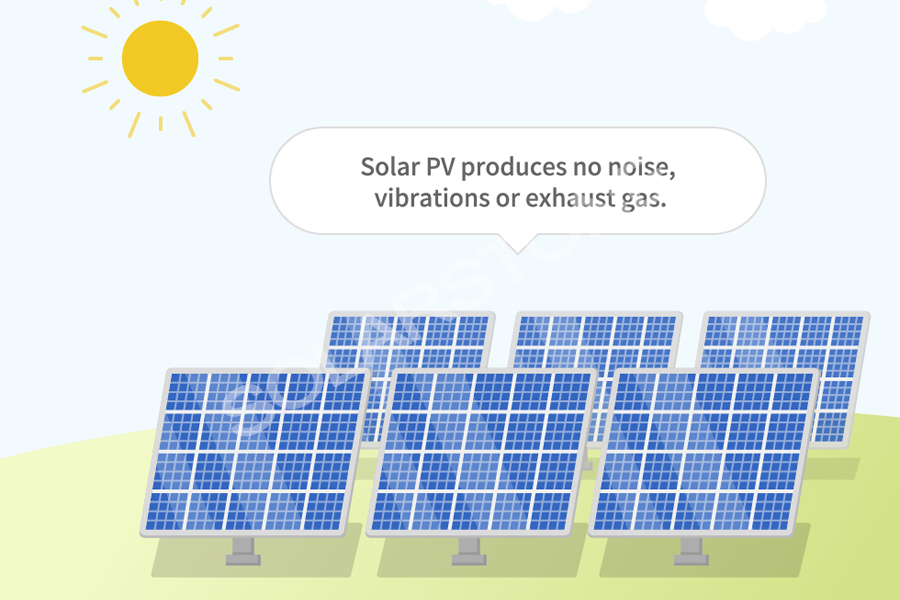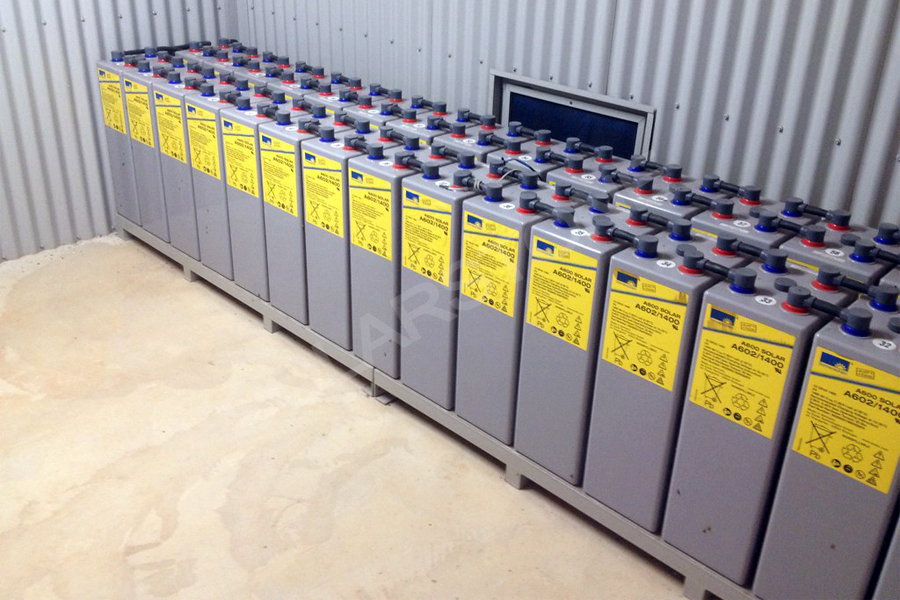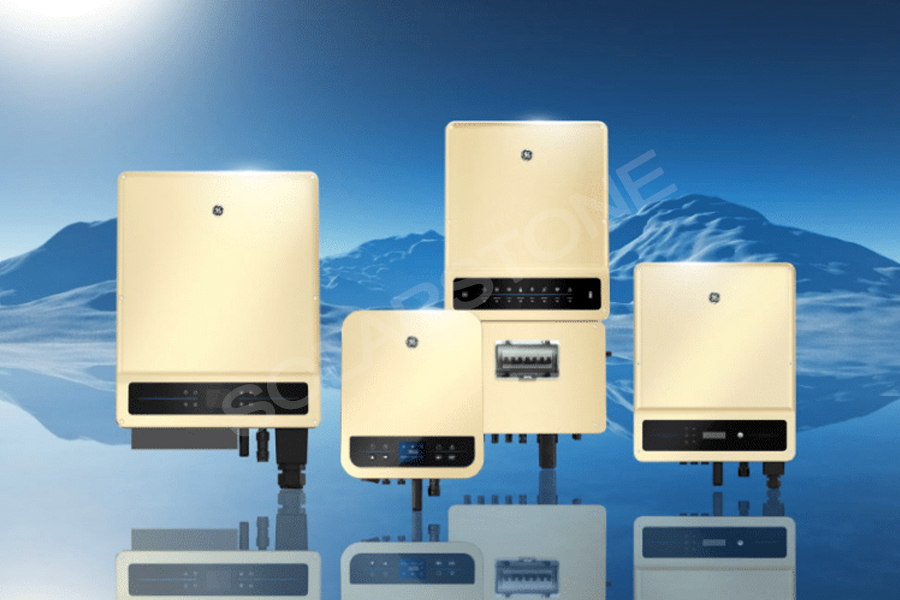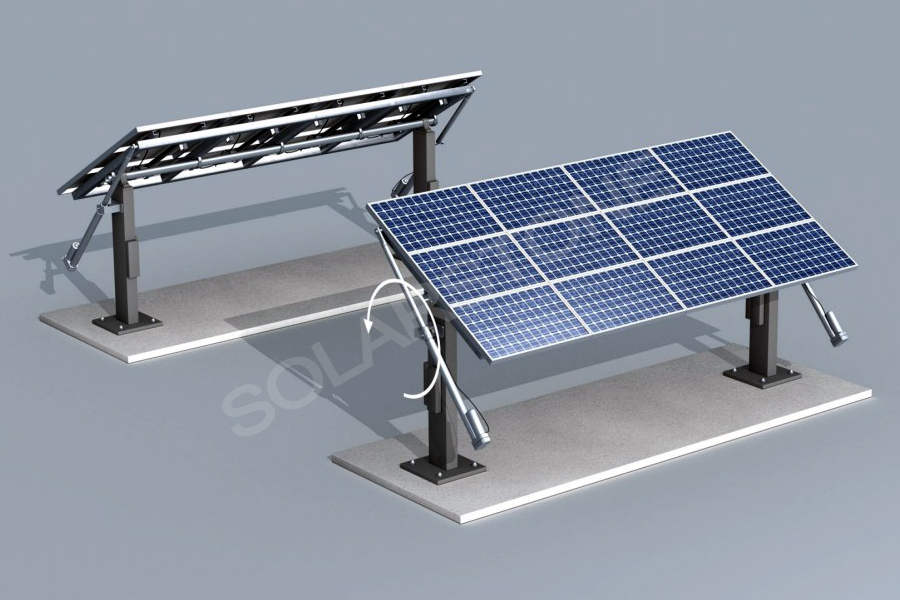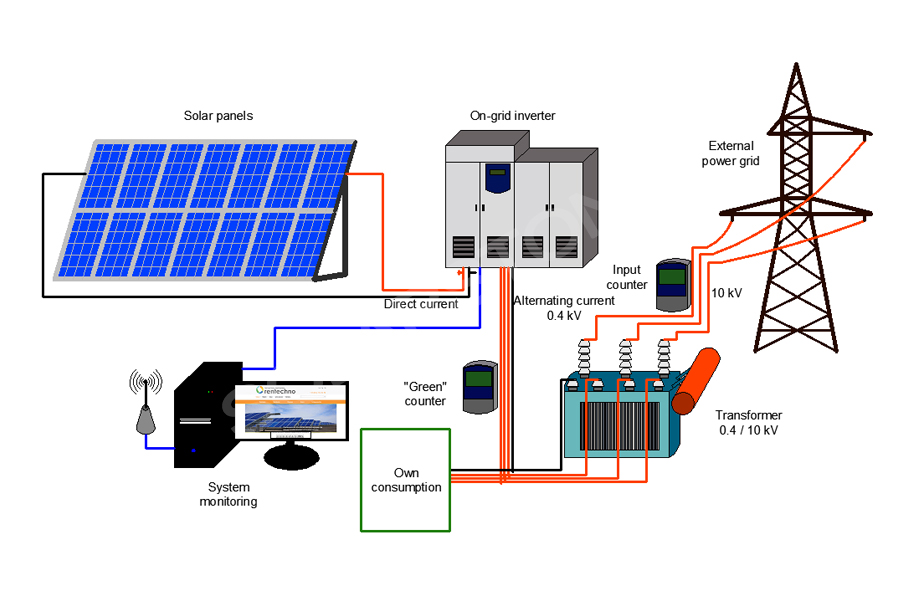As we all know, on earth, our energy basically comes from the sun. The sun is a hot fireball. It radiates light and heat at the speed of 300000 km / s, and it takes 8 minutes to travel to the earth.
According to the different forms of solar radiation energy conversion, solar energy utilization can be divided into solar power generation and photothermal power generation. Among them, solar power generation is recognized as the most potential and promising new energy technology in the world because of its unique advantages.
Its advantages are: solar energy resources are very rich, huge reserves, inexhaustible use, and do not need transportation; The principle of solar power generation is the solar effect, which does not involve the conversion of mechanical energy to electromagnetic energy. It has no noise and will not affect the daily life of the surrounding residents; Solar power generation is clean, clean, environment-friendly, and pollution-free; solar modules have a long service life, stable operation, and high reliability; Low maintenance cost.
Solar power generation is a technology that uses the solar effect of semiconductor interface to directly convert light energy into electric energy. The key component of this technology is solar cells. After the solar cells are packaged in series, a large area of solar panels can be formed, and then with the power controller and other components, the solar power generation system is formed.
The main components of a solar power generation system include solar panel, battery, controller, inverter, and tracking system. The functions of each component are as follows:
Solar panels
In the case of light, the solar cell absorbs light energy, and there is the accumulation of different sign charges at both ends of the solar cell, which is called “photovoltage”, which is called the “photovoltage effect”. Under the action of the solar effect, the two ends of the solar cell generate electromotive force to convert light energy into electric energy, which is the device of energy conversion. Solar cells are generally silicon cells. They are divided into monocrystalline silicon solar cells, polycrystalline silicon solar cells, and amorphous silicon solar cells. At present, monocrystalline silicon solar cells are widely used in the market.
Battery
Its function is to store the electric energy generated by the solar array when it is illuminated and supply power to the load at any time. The basic requirements of solar batteries for power generation are as follows:
- Low self-discharge rate
- Long service life
- Strong deep discharge capability
- High charging efficiency
- Less maintenance or no maintenance
- Wide working temperature range;
- Low price
Controller
It can automatically prevent battery overcharge and over discharge. Because the cycle charge and discharge times and discharge depth of the battery are important factors to determine the service life of the battery, the charge and discharge controller which can control the battery overcharge or over-discharge is essential equipment.
Inverter
It’s a device that converts direct current into alternating current. Because solar panels and batteries are DC power supplies, and the load is AC load, the inverter is essential. The inverter can be divided into an independent operation inverter and a grid-connected inverter according to the operation mode.
Independent operation inverter is used for independent operation of solar power generation system to supply power for the independent load. The grid-connected inverter is used in a grid-connected solar power generation system.
The inverter can be divided into square wave inverter and sine wave inverter according to the output waveform. Square wave inverter has a simple circuit and low cost, but it has a large harmonic component. It is generally used in a system with a few hundred watts or less. The cost of a sine wave inverter is high, but it can be applied to all kinds of loads.
Tracking system
Compared with the solar power generation system in a fixed location, the sun’s illumination angle changes all the time in spring, summer, autumn, and winter, and the sun rises and sets every day. If the solar panel can face the sun all the time, the power generation efficiency will reach the best state.
System types:
Independent solar power generation system
Independent solar power generation system is also called off-grid solar power generation system. It is mainly composed of a solar panel, controller, and storage battery. To supply power for AC load, an AC inverter is also needed. The independent solar power station includes a village power supply system in remote areas, solar household power supply system, communication signal power supply, cathodic protection, solar street lamp, and other solar power generation systems with batteries that can operate independently.
Grid-connected solar power generation system
Grid-connected solar power generation system is that the direct current generated by solar panels is converted into alternating current which meets the requirements of the municipal power grid through grid connected inverter and then directly connected to the public power grid. It can be divided into a grid-connected power generation system with a battery and a grid-connected power generation system without a battery.
The grid-connected solar power generation system with a storage battery is schedulable, which can be integrated into or out of the power grid according to the need. It also has the function of standby power supply, which can provide an emergency power supply when the power grid is cut off for some reason. Solar grid-connected power generation system with battery is often installed in residential buildings; The grid-connected solar power generation system without battery does not have the function of schedulability and standby power supply and is generally installed on a larger system.
Grid-connected solar power generation system is divided into centralized large grid-connected solar power stations and small grid-connected solar power stations. Centralized large-scale grid-connected solar power stations are generally state-level power stations. The main feature is that the generated energy is directly transmitted to the power grid, and the power is uniformly distributed by the power grid to supply power to users. However, this kind of power station has a large investment, long construction period, and large floor area needed, so it has not been greatly developed. The decentralized small-scale grid-connected solar power generation system, especially the solar building integrated solar power generation system, is the mainstream of grid-connected solar power generation system due to the advantages of small investment, fast construction, small floor area needed, and strong policy support.
Distributed solar power generation system
Distributed solar power generation system, also known as distributed generation or distributed energy supply, refers to the configuration of a small solar power supply system at or near the user site to meet the needs of specific users, support the economic operation of the existing distribution network, or meet the requirements of both.
The basic equipment of distributed solar power generation system includes solar panels, solar array bracket, DC combiner box, DC distribution cabinet, grid-connected inverter, AC distribution cabinet, other equipment, and power supply system and environmental monitoring device. Its operation mode is that under the condition of solar radiation, the solar module array of the solar power generation system converts the solar energy into the output electric energy, which is sent to the DC distribution cabinet through the DC combiner box. The grid-connected inverter inverts the current to supply the building’s load, and the excess or insufficient power is regulated by connecting the grid.
Under the dual pressure of energy crisis and environmental pollution, it is urgent to research and develop new energy to solve the future human demand for energy. Based on the above advantages of solar power generation systems, and in recent years, solar power generation technology is more and more mature, and the cost continues to reduce, solar power generation system will become an ideal form of power generation system in the future.



